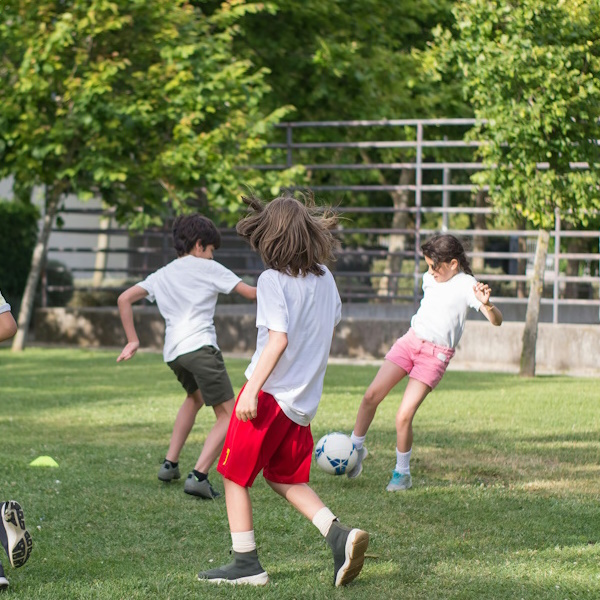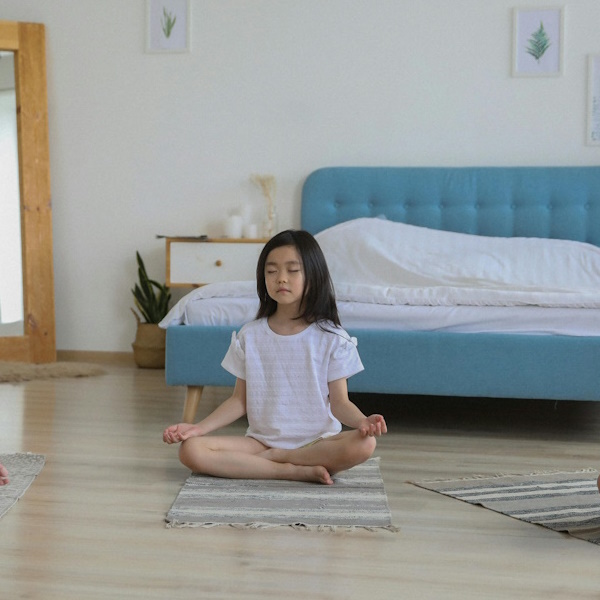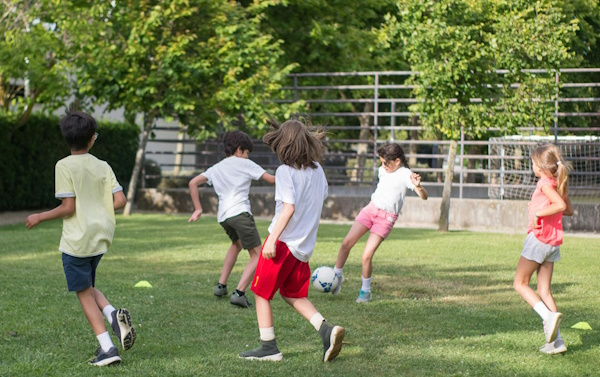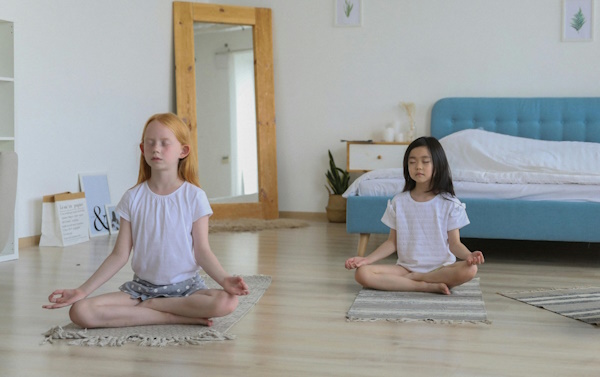Boosting Kids' Digital Wellbeing: A Guide for Parents
In today's digital age, ensuring your child's wellbeing online has never been more crucial. With screens almost becoming extensions of our bodies, it's essential to navigate the fine line between harnessing the power of digital tools and safeguarding our kids' mental and emotional health.
As you dive into the world of digital wellbeing for children, you'll discover strategies and insights that empower you to create a balanced digital environment at home. From setting healthy screen time limits to fostering positive online experiences, understanding digital wellbeing is key to helping your child thrive in a connected world.
Understanding the Importance of Digital Wellbeing for Children
In today's fast-paced digital landscape, it's crucial to acknowledge the immense influence technology has on young minds. Digital wellbeing for children isn't just about limiting screen time; it's about fostering a healthy relationship with technology. By understanding the importance of digital wellbeing, you're equipped to guide your children towards positive digital habits that will serve them well throughout their lives.
Creating a balanced digital environment at home involves more than setting time limits on device use. It's about encouraging quality over quantity. Encourage your children to engage with content that nurtures their creativity, knowledge, and skills. This could include educational apps, documentaries, and interactive games that challenge their problem-solving abilities. Promoting meaningful digital interactions helps children appreciate the value of technology as a tool for learning and personal growth, rather than merely a source of entertainment.
Moreover, digital wellbeing also encompasses teaching children about the importance of privacy and security online. With the rise of cyber threats, it’s essential to educate your children about the dangers of oversharing personal information and the steps they can take to protect themselves. Discussing the significance of strong passwords, being wary of suspicious links, and understanding privacy settings on social media platforms are all key aspects of nurturing a digitally wise generation.
Integrating discussions about digital wellbeing into your daily conversations with your children demonstrates its importance and encourages them to think critically about their digital habits. By doing so, you're not only protecting them from potential harm but also preparing them to navigate the digital world with confidence and responsibility.
Setting Healthy Screen Time Limits
In navigating the balance between the digital world and real life, setting healthy screen time limits for your children is paramount. It’s not just about the quantity of time spent online but about ensuring the quality of that time as well. Establishing these boundaries early on can foster a positive digital environment conducive to your child's overall wellbeing.
The American Academy of Pediatrics suggests that screen time for children aged 2 to 5 should be limited to one hour per day of high-quality programs. For older children and teenagers, the emphasis shifts from setting strict limits to encouraging healthy habits and meaningful digital engagement. Therefore, the responsibility falls on you to guide and enforce these limits effectively.
| Age Group | Recommended Screen Time |
|---|---|
| 2 to 5 years | 1 hour/day |
| 6 years and older | Monitor for healthy balance |
Start by creating a family media plan that outlines specific times for using digital devices and includes tech-free zones in your home, particularly bedrooms and dining areas. Encourage activities that do not involve screens, like outdoor play, reading, and family board games, to ensure a diverse set of experiences.
In addition to these limits:
- Discuss the importance of breaks to reduce eye strain and promote physical activity.
- Encourage participation in choosing what to watch or play, fostering a sense of responsibility.
- Monitor and engage with your child's digital content, ensuring it's appropriate and educational.
Remember, flexibility is key. There will be times, like during long travels or special occasions, when adjustments are necessary. The goal is to maintain an open dialogue with your children about their digital experiences, encouraging them to think critically about their online activities and choices.
Protecting Children from Inappropriate Online Content
In the digital age, Protecting Children from Inappropriate Online Content is crucial for their safety and development. As a parent, it’s your responsibility to have controls in place to ensure that your child is exposed only to content that’s suitable for their age. With countless websites and social media platforms at their fingertips, the challenge can seem daunting, but with the right strategies, you can create a safer online environment for your children.
Firstly, take advantage of parental controls. Most devices and internet browsers offer built-in settings that allow you to restrict access to specific sites, filter out explicit content, and monitor your child’s online activity. Setting these up isn't just a one-time task; it's an ongoing process that requires regular updates as your child grows and their online interests change.
Educating your child about the dangers of the internet is equally important. Encourage open discussions about what they might encounter online, including both the positives and the potential risks. Teach them to critically evaluate the content they come across and to always check with an adult if they're unsure about something they've found.
Here's a quick checklist to help you start:
- Use parental control software to monitor and restrict internet usage.
- Keep the computer or device in a common area where you can easily oversee their online activities.
- Regularly review the list of websites your child visits and the apps they use.
- Set clear rules about what is and isn’t appropriate for them to view or share online.
- Encourage them to talk to you about anything uncomfortable or suspicious they encounter on the internet.
Remember, while technology can open doors to vast knowledge and opportunities for your child, it's pivotal to steer them clear of its dark corners. By actively taking steps to protect them from inappropriate online content, you’re not only safeguarding their digital wellbeing but also teaching them critical skills to navigate the online world responsibly.
Teaching Digital Citizenship and Online Safety
In today's interconnected world, teaching your children digital citizenship and online safety is paramount to ensuring their digital wellbeing. Digital citizenship encompasses understanding how to behave responsibly online, including recognizing the difference between right and wrong and respecting the rights and feelings of others in the digital community.
To start, it's crucial you explain the concept of a digital footprint to your children. Every post, like, and comment contributes to a digital trail that can last a lifetime. Emphasize the permanence of online actions and the importance of thinking before sharing.
Here are some strategies to instill good digital citizenship habits:
- Model Positive Behavior: Your online behavior can set a powerful example for your children. Demonstrate thoughtful sharing, respectful communication, and safe practices.
- Discuss Online Ethics: Conversations about plagiarism, piracy, and the legal aspects of digital content can help children understand the boundaries of acceptable online behavior.
- Encourage Empathy: Teach your children to consider the impact of their words and actions online. Ask, "How would you feel if someone said this about you?" to foster empathy.
Online safety is just as critical as citizenship. Protecting your children from potential digital hazards means educating them about these risks and how to navigate them safely.
- Teach Critical Thinking: Equip your children with the ability to question and assess the credibility of online information. This skill is vital for recognizing misinformation and avoiding scams.
- Safe Communication Practices: Ensure your children know the importance of never sharing personal information online without parental consent. This includes names, addresses, and phone numbers.
Incorporating these teachings into daily life helps children make safer, more informed decisions online. By fostering an environment of open dialogue about digital citizenship and online safety, you're not only protecting your children but also empowering them to navigate the digital world with confidence and respect.
Nurturing Positive Online Experiences
In the realm of digital wellbeing, nurturing positive online experiences for your children goes a long way. It's about steering them towards spaces that enrich their knowledge and enhance their creativity. Quality content is king. Focus on websites, apps, and platforms that offer educational value or foster skill development. This could mean interactive learning apps, documentaries, or creative platforms that encourage artistic expression.
Creating a positive digital environment also involves participating in your child's digital life. Dedicate time to explore new games, websites, and educational tools together. This not only helps you assess the content's quality but also strengthens your bond with your child, making them more open to sharing their online experiences with you.
Setting boundaries plays a crucial role. Encourage your kids to question the content they consume by asking how it makes them feel or what they've learned from it. This promotes critical thinking and helps them become more selective about their digital choices. Moreover, encourage them to share interesting finds with you. This practice not only fosters a healthy curiosity but also provides an opportunity for guidance and shared learning experiences.
To supplement positive online engagement, consider the following approaches:
- Establish tech-free times or zones where the focus shifts to offline activities. This balance is crucial for mental and emotional health.
- Encourage meaningful digital interactions by guiding your children to platforms that enable learning through play, creative expression, or problem-solving.
- Monitor but don’t hover. Use parental controls wisely to ensure safety while fostering independence and trust.
Each of these strategies contributes to a holistic approach to digital wellbeing, encouraging children to form a respectful and informed relationship with technology. By prioritizing meaningful content and active engagement, you lay the groundwork for a positive digital footprint and a well-rounded developmental journey.
Conclusion
Navigating the digital world is a complex journey for your children but with the right approach it becomes an enriching experience. By setting healthy screen time limits fostering a balanced digital environment and protecting them from inappropriate content you're laying a solid foundation. Teaching digital citizenship and online safety is equally crucial ensuring they understand the impact of their online actions. Remember nurturing positive online experiences goes beyond mere supervision—it involves active participation and dialogue. As you guide your children through the digital landscape remember flexibility understanding and open communication are key. Your efforts today will help them build a healthy relationship with technology that will serve them well into the future.







